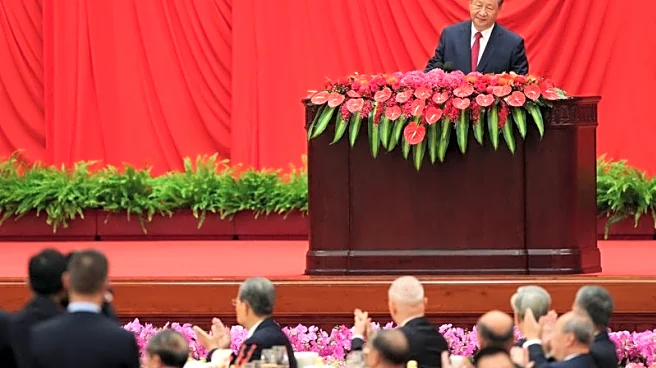What's Happening?
China's consumer price index fell by 0.3% in September compared to the previous year, exceeding economists' expectations of a 0.2% decline. This drop, along with a 2.3% decrease in the producer price index,
highlights ongoing deflationary pressures in the Chinese economy. Despite a slight month-on-month increase in consumer prices, the overall trend suggests sluggish domestic demand and trade concerns are affecting consumer and business sentiment.
Why It's Important?
The deflationary trend in China poses challenges for global trade and economic stability. As one of the world's largest economies, China's economic health impacts international markets, including the U.S. Persistent deflation could lead to reduced demand for imports, affecting U.S. exporters and potentially leading to trade imbalances. Additionally, deflationary pressures may prompt China to implement monetary easing measures, influencing global financial markets.
What's Next?
China may consider monetary easing to counteract deflationary pressures and stimulate economic growth. Such measures could include interest rate cuts or increased fiscal spending. The global economic community will closely monitor China's policy decisions, as they could have ripple effects on international trade and investment.
Beyond the Headlines
The deflationary trend in China underscores the importance of understanding the interconnectedness of global economies. As China navigates its economic challenges, the potential impacts on trade, investment, and economic policy highlight the need for strategic international cooperation.












